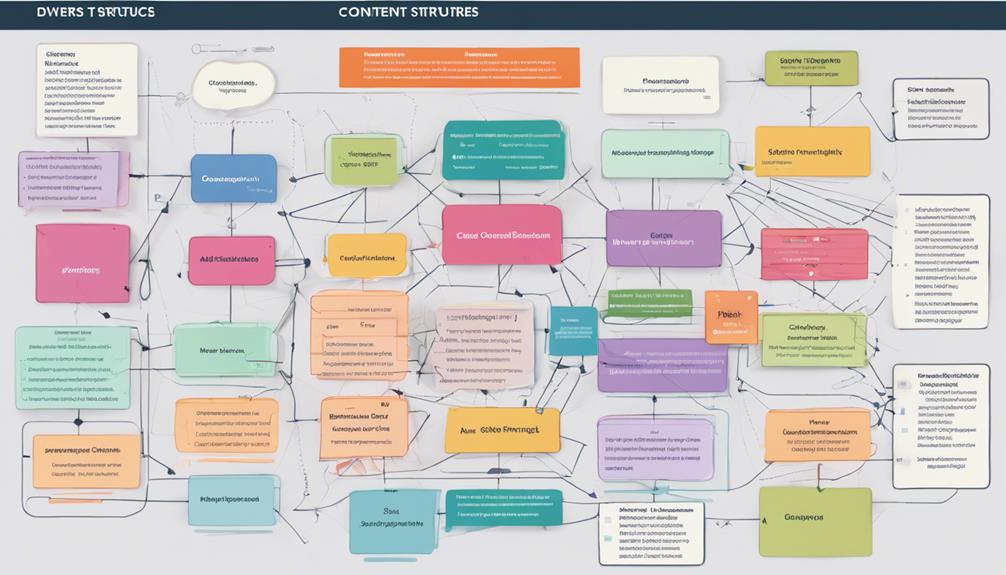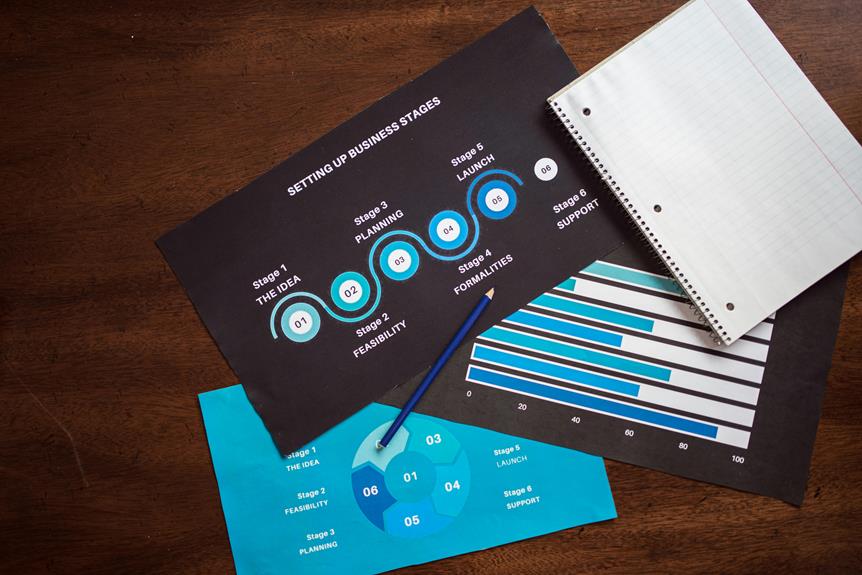When you conduct a competitor content quality audit, you're not just keeping an eye on what others are doing—you're uncovering the very strategies that make them tick. By evaluating their content structure, relevance, and engagement metrics, you gain a clearer picture of where you stand in the market. This process isn't about copying; it's about understanding the trends and preferences shaping your industry. What insights might you discover that could transform your approach and set you apart? The answer could redefine your content strategy and enhance your brand's position. Are you ready to explore these possibilities?
Identify Competitor Strategies
Identifying competitor strategies is crucial for gaining a competitive edge in any industry. To effectively identify these strategies, you must first immerse yourself in a comprehensive competitor analysis. Start by pinpointing your main competitors, considering both direct and indirect players. Examine their market positioning, target audience, and unique selling propositions (USPs). This will give you insights into their overarching objectives and how they differentiate themselves.
Next, delve into their content marketing tactics. Look at the type of content they produce—blogs, videos, infographics—and the frequency of their publications. Understanding which platforms they leverage, whether it's social media, email newsletters, or SEO-driven content, can reveal their engagement priorities.
Evaluate the tone and style of their messaging. Are they more formal, or do they opt for a conversational approach? Knowing this helps you fathom their brand personality and audience appeal.
Additionally, pay attention to the topics they focus on. Determine if they're addressing trending issues, evergreen content, or niche areas that could be underserved in your industry. This strategic insight allows you to spot gaps in the market you could exploit.
Don't overlook their customer interaction. Analyze reviews, comments, and social media engagements to gauge how they handle customer feedback and build community. This can be a goldmine for uncovering their customer service philosophy and engagement tactics.
Analyze Content Structure

When analyzing content structure, it's essential to focus on the underlying framework that guides how information is presented, ensuring it effectively captures and retains the audience's attention. You need to consider how your competitors organize their content.
Do they use headings and subheadings effectively? This hierarchy not only breaks down complex information but also enhances readability, making it easier for readers to skim and find relevant sections.
Pay attention to how paragraphs are structured. Are they concise and coherent, with a logical flow from one idea to the next? A well-structured paragraph guides the reader smoothly through the narrative, maintaining engagement.
Look at how competitors use lists, bullet points, or numbered steps. These elements can significantly improve clarity and help distill complex topics into digestible chunks.
Observe the use of visual elements. High-quality content often integrates images, infographics, and videos strategically to complement the text. This can't only make the content more engaging but also aid in explaining intricate concepts more effectively.
Consider the opening and closing sections of competitor content. Are introductions compelling enough to hook the reader? Do conclusions provide a satisfying summary or call to action? These are critical for ensuring that content not only attracts but also retains reader interest.
Assess Content Relevance

To stay ahead in the competitive landscape, it's crucial to assess content relevance by measuring how well it aligns with the audience's needs and interests. By scrutinizing your competitors' content, you gain insights into their strategies and identify gaps where you can outshine them.
First, ask yourself: does their content address the pressing questions and pain points of the target audience? If it doesn't, this is your opportunity to fill that void with your own content.
Dive deep into the themes and topics your competitors cover. Are they focusing on trends that matter to your audience, or are they missing the mark? Analyze the depth and breadth of their topics. Content that scratches the surface may miss the opportunity to engage an audience that craves detailed, well-researched information.
Identifying these shortcomings allows you to strategically tailor your content to be more comprehensive and relevant.
Consider the delivery format. Is the content available in various forms—blogs, videos, podcasts—that cater to different consumption preferences? If your competitors lack variety, capitalize on this by diversifying your content formats. This not only enhances relevance but also broadens your reach.
Moreover, pay attention to the language and tone used in competitor content. Does it resonate with the audience's preferences and expectations? A mismatch here could be a signal for you to refine your voice to better connect with the audience.
Ultimately, assessing content relevance is about strategically positioning your content to not only meet but exceed audience expectations, creating a competitive edge that's hard to ignore.
Evaluate Engagement Metrics

Understanding how your audience interacts with content is pivotal for refining your competitive strategy. By evaluating engagement metrics, you can gain profound insights into what resonates with your target demographic.
Start by analyzing key performance indicators such as likes, shares, comments, and click-through rates on your competitors' content. These metrics serve as a barometer of audience interest and can reveal which topics, formats, and delivery styles are most effective.
Look at the patterns in engagement. Do certain types of content consistently garner higher interaction? Is there a correlation between posting frequency and audience engagement? Identifying these trends allows you to discern the underlying preferences of the audience.
Additionally, pay attention to the qualitative aspects of engagement. Comments can provide rich insights into audience sentiment and expectations, offering a deeper understanding of how content is perceived beyond mere numbers.
It's also crucial to benchmark these findings against your own content. Determine where your competitors are succeeding in driving engagement and where there might be gaps in your strategy.
This comparison can highlight opportunities for differentiation and innovation. Be strategic—use these insights to make informed decisions about potential content adjustments.
Improve Your Content Strategy

Crafting a robust content strategy is akin to constructing a well-oiled machine that drives your brand's narrative forward. By conducting a competitor content quality audit, you gain essential insights into what works and what doesn't in your industry. This process helps identify gaps in your current strategy and reveals opportunities for differentiation.
Start by analyzing the strengths and weaknesses of your competitors' content. Are they using specific keywords more effectively? Is their tone more engaging or their visuals more compelling? By understanding these elements, you can refine your own content approach. Prioritize adopting successful tactics while ensuring your unique brand voice remains intact.
Next, pay attention to content formats that resonate with audiences. If competitors' video content garners more engagement than their blog posts, consider integrating more multimedia elements into your strategy. This adaptability not only keeps your audience interested but also caters to diverse preferences, enhancing overall reach.
Furthermore, use the audit to identify untapped topics or underrepresented themes. If competitors haven't fully explored a niche subject that aligns with your expertise, seize the opportunity to establish authority in that area. This strategic positioning can elevate your brand as a thought leader, attracting a loyal following.
Lastly, measure your content's performance against competitors. Set benchmarks based on their successes and strive to exceed them. Continuous improvement is key; regularly revisit your strategy, incorporating insights from updated audits to stay ahead in the competitive landscape.
In essence, a competitor content quality audit is a strategic tool that empowers you to refine and enhance your content strategy, ensuring it remains dynamic and impactful.
Conclusion
By conducting a competitor content quality audit, you become like Sherlock Holmes, deciphering the mysteries of what makes your rivals tick. You'll uncover their strategies, dissect their content structures, and gauge their relevance to the audience. With a keen eye on engagement metrics, you'll refine your own content strategy, ensuring you're not just playing catch-up but leading the game. This strategic insight empowers you to position your brand as the industry's thought leader, capturing your audience's imagination.


